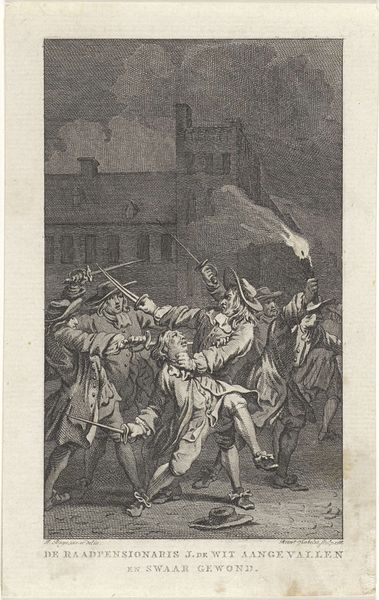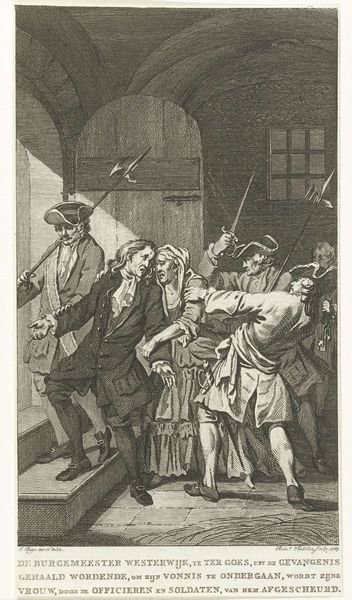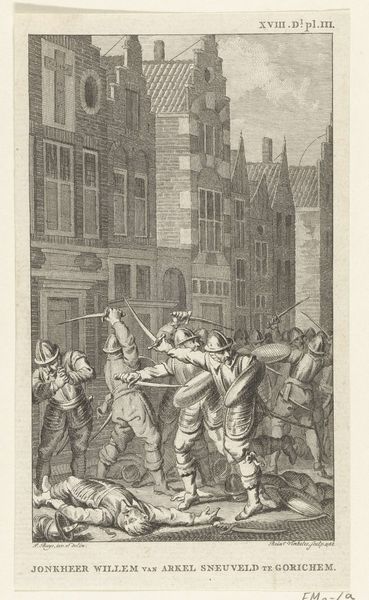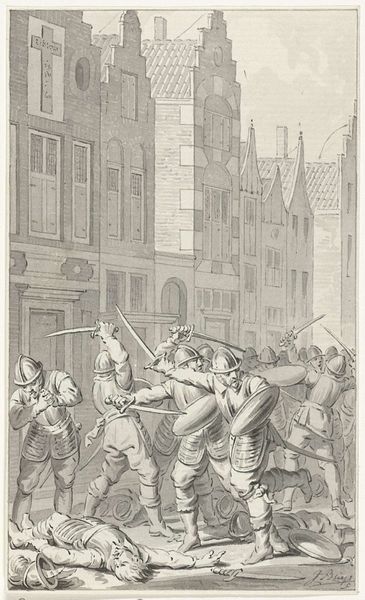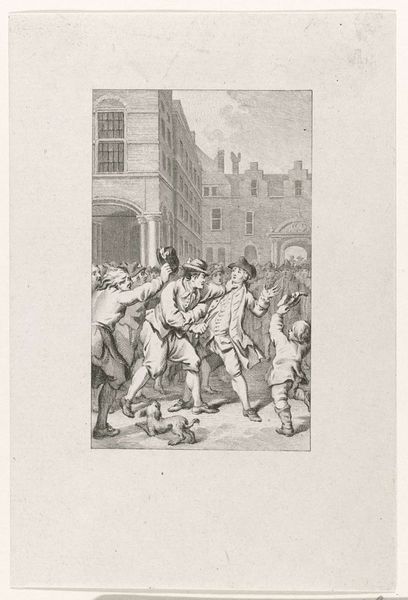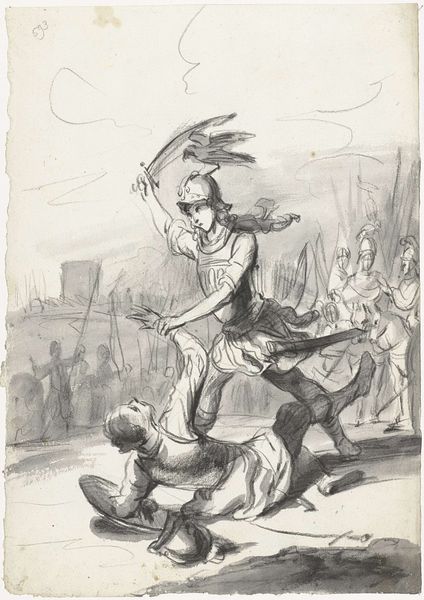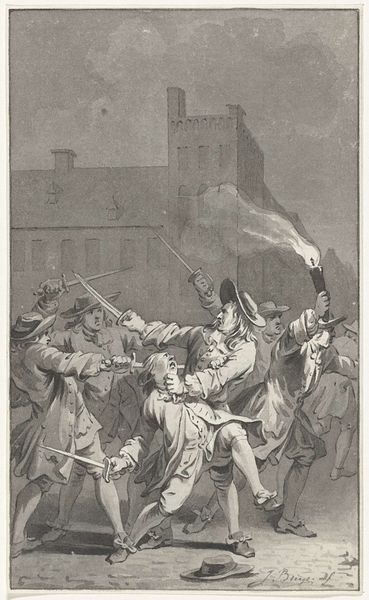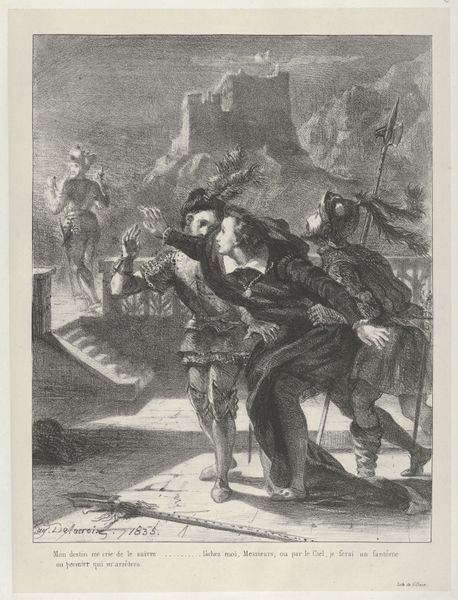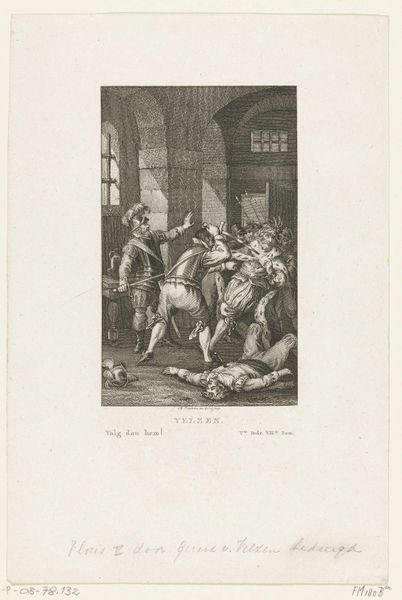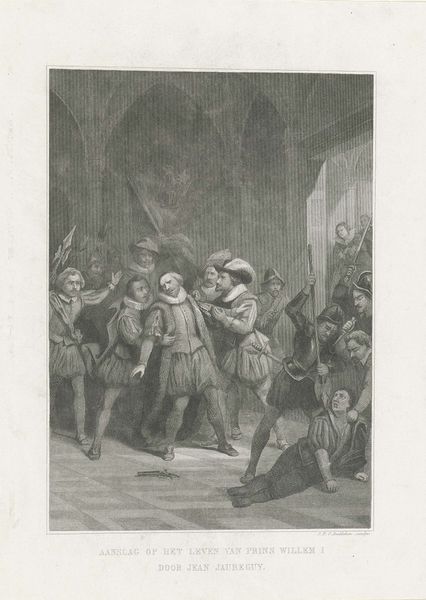
Dimensions: height 185 mm, width 150 mm
Copyright: Rijks Museum: Open Domain
Curator: This engraving, titled "Frezin door Goignies gedood, 1581," created in 1787 by Theodoor Koning, vividly depicts a historical moment, currently held in the Rijksmuseum collection. What strikes you first about this print? Editor: The dramatic chiaroscuro, the extreme contrasts between light and dark, immediately create a sense of impending doom. The figures seem caught in a moment of brutal action, lit by what looks like a single torch. It’s visually very arresting. Curator: Indeed, Koning masterfully employs line and light to create this sense of drama. The torch serves as a focal point, not only illuminating the central struggle but also drawing the eye to the historical narrative. The killing of Frezin by Goignies in 1581. Editor: The choice to represent this specific historical event carries significant weight. What was Frezin, the person murdered by Goignies, symbolizing for people at the time? Who commissioned Koning to do this engraving in the late eighteenth century? Curator: "Frezin door Goignies gedood, 1581" memorializes the actual killing of Frezin. And even the artist, Koning, has inscribed that in its title. Here, we note a continuation of violence as cultural memory. Koning, who dedicated himself to the study of the fine line, offers us a print dominated by the grisaille method. In its reliance on gradations of grey to model form, we see how much of what came before fed into his artistry. Editor: You make an excellent point about the grayness lending itself to the sombre, historical scene represented. The very absence of colour forces us to confront the gravity of the event, doesn't it? It lends the whole piece a stark, unromantic air, stripping away any potential for glamour in the violence. I hadn't thought about this being Koning's conscious artistic choice. Curator: That lack of "glamour" also challenges the romanticization that so many other narrative paintings from that period relied on, doesn’t it? It is almost a pre-cinematic scene due to the composition's rawness, capturing both tension and chaos in equal measure. Editor: Absolutely. Well, this has definitely shed some light on the narrative. It reminds us to consider the symbols within their historical framework and beyond as powerful shapers of memory and cultural identity. Curator: Indeed. Through his mastery of the engraving medium, Koning provides a timeless lens to understand both historical and psychological undercurrents.
Comments
No comments
Be the first to comment and join the conversation on the ultimate creative platform.
